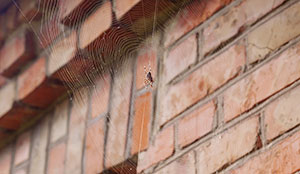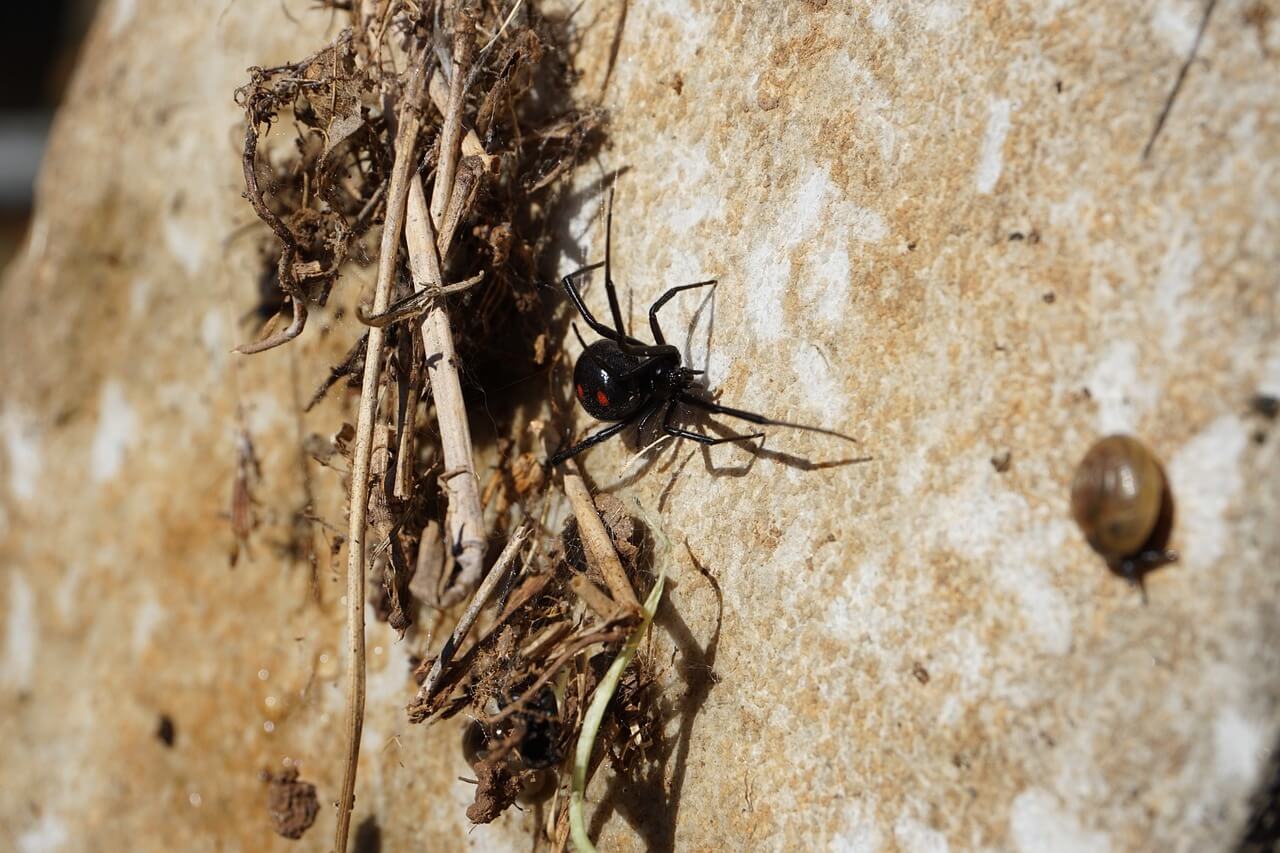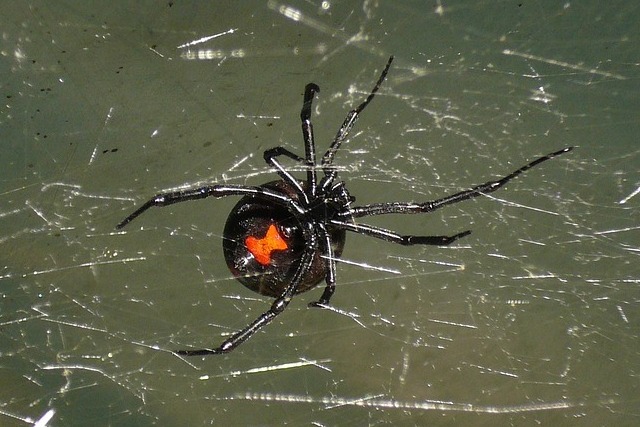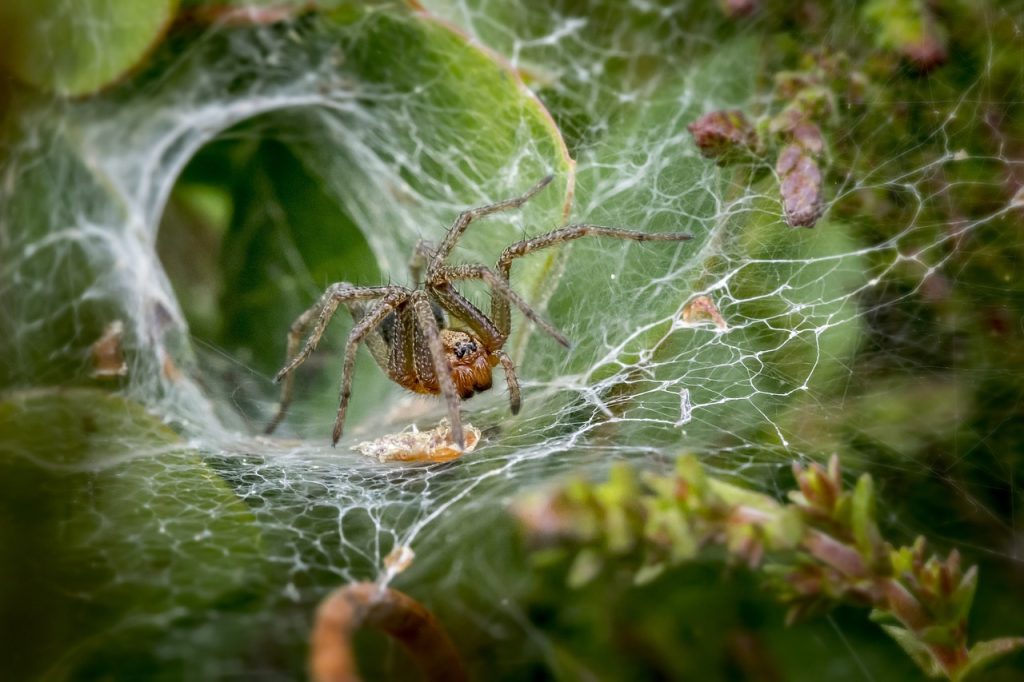
Spiders are common — yet often misunderstood — visitors in homes and gardens across the Pacific Northwest, particularly in Oregon and Washington. As temperatures drop, spiders tend to move indoors and closer to us, which can cause concern about potential bites or other safety issues. While some spiders can be harmful, others are a very integral part of the pest control in the ecosystem.
Understanding which spiders are dangerous and which are harmless can help reduce fear and make it easier to manage them in your space. In this guide, we’ll explore how to identify different spider species by color, size and unique features. We’ll also cover which spiders to watch out for, which spiders have benefits and tips for keeping them out of your home.
1. Identifying Spiders by Color
Color is usually one of the easiest ways to identify a spider. Here are the common colors of spiders you might encounter in OR/WA:
– Black: The black widow is one of the most infamous spiders in the region. While it’s not often found indoors, its shiny black body and red hourglass marking make it easy to spot during an encounter. Other common black spiders in the region include various types of jumping spiders, which have thick legs and tend to be more active in warmer months.
-Brown: Brown is another common color for spiders in OR and WA. The brown recluse is occasionally found here, though it’s fairly rare. The hobo spider, another brown spider, is more common in homes and is often confused with the brown recluse. Common house spiders are also brown and tend to build cobwebs in dark, quiet places in homes.
–Orange & Red: Orb-weaving spiders have orange, red and yellow hues. These brightly colored spiders are not dangerous and are typically found in gardens. Garden spiders with reddish or orange tones are active in the late summer and early fall, adding color to outdoor spaces.
-White & Yellow: Crab spiders are white or yellow, blending into flowers where they hunt for insects. These are generally harmless to humans. Another common yellow spider is the garden spider, known for its striking yellow and black markings, which can sometimes surprise people with their size and vibrant colors.

2. Identifying Spiders by Size
Size is another useful identification factor. Here’s a breakdown of the possible size range:
-Large: Wolf spiders and large orb-weavers are among the biggest you’ll see in OR and WA. Despite their size, wolf spiders do not actually pose a significant threat. Orb-weavers can create expansive webs in gardens, spanning several feet in width, which helps them catch a variety of insect prey.
-Medium & Small: Many common house spiders, like cellar spiders, are small and benign. Cellar spiders, often known as “daddy longlegs,” are known for their long, delicate legs and tendency to hang upside down in webs.
Pairing color with size can help you to narrow down identification — for instance, a small brown spider may likely be a hobo spider, while a large orange spider could be an orb-weaver.
3. Common Spider Species in Oregon and Washington
Here’s a closer look at common spider species you may find in the Pacific Northwest:
-Black Widow: Known for its potent venom, the black widow has a shiny black body with a red hourglass marking on its abdomen. It’s considered venomous but only bites if disturbed. Black widows often create messy, irregular webs in hidden places like woodpiles, sheds and garages.
–Hobo Spider: Found indoors and outdoors, this brown spider is common in OR and WA. While not deadly, its bite can cause irritation. Look for its distinctive funnel-shaped webs. The hobo spider’s webs are usually located close to the ground or in basements, which can make them seem more threatening in-home environments.
-Wolf Spider: A large, fast-moving spider that hunts rather than spins webs. It’s intimidating but not aggressive toward humans. Wolf spiders are unique in that they carry their egg sacs with them, making them easy to recognize if spotted carrying a small, round sac on their abdomen.
-Orb-Weaving Spider: These spiders build large, circular webs, usually in gardens. They can be brightly colored in shades of red, orange or yellow and pose no danger.
-Crab Spider: Named for their crab-like appearance, these spiders are small and usually found on flowers, using camouflage to catch prey. They’re harmless to humans.

4. Spider Habitats: Where You’ll Find Them
Spiders can inhabit a range of areas depending on the species:
-House: Spiders like the hobo and cellar spider are most often found indoors. They prefer dark, undisturbed areas such as basements, closets and garages. Other common house spiders tend to stay in corners and can help reduce the number of flying insects inside.
–Garden: Garden spiders, including orb-weavers and crab spiders, are typically found among plants where they help control pest populations. Gardens attract these spiders due to the abundance of insects, which makes them ideal hunting grounds.
–Grass and Under Rocks: Wolf spiders and crab spiders may be found in grassy areas or under rocks, where they hunt for prey. Wolf spiders, for instance, prefer areas where they can dig small burrows or hide beneath dense vegetation.
5. Are They Dangerous? Bite Risks and Safety Tips
Not all spiders can hurt you. Here’s a rundown of which spiders to be cautious of:
-Venomous: The black widow is the most dangerous spider in the region, though bites are rare.
-Biting Risks: The hobo spider’s bite can be irritating but is not deadly. Wolf spiders may bite if provoked but are not considered dangerous.
-Jumping: Wolf spiders and jumping spiders can startle people with their quick movements but are not venomous. Jumping spiders are curious creatures and often have large, forward-facing eyes, which they use to observe their surroundings.
Safety Tip: If you spot a potentially venomous spider like a black widow, avoid disturbing it. Most spiders are not aggressive and will only bite in self-defense.
6. Benefits of Spiders in Your Home and Garden
While some spiders may be unwelcome guests, many can provide benefits that help maintain ecological balance:
-Pest Control: Spiders feed on insects, which can help keep pest populations in check naturally. For instance, garden spiders catch aphids and other pests that harm plants. This natural pest control can reduce the need for chemical pesticides, making it a more eco-friendly solution for gardeners.
-Minimal Harm: Most common spiders in OR/WA pose little to no threat to humans and pets, preferring to stay out of sight and out of the way.

7. Spider Identification Tips and Visual Aids
To help identify spiders, consider using visual aids like:
-Spider Identification Charts: These can come in handy for comparing color, size and markings of different spiders.
-Online Photos: Many websites and pest control resources provide photo galleries of spiders common in OR/WA. For the best accuracy, try looking at multiple images from different angles to match the spider you’ve encountered.
-Characteristic Lists: Keep a list of common spiders and their characteristics to help you quickly and easily identify them.
8. Keeping Spiders Out of Your Home
If you’d prefer to minimize spider sightings indoors, follow these steps:
-Seal Entry Points: Spiders enter homes through small gaps in windows, doors and foundations. Sealing these areas can reduce indoor encounters.
-Clear Clutter: Spiders like to hide in areas with minimal activity. Keep spaces like basements and garages free of clutter. Reducing clutter also helps prevent other pests that spiders feed on from entering your home.
-Remove Webs: Regularly sweep away webs to discourage spiders from setting up long-term residence indoors.
Spiders are simply a part of life in Oregon and Washington, and while a few species pose risks, most are harmless and even beneficial. By knowing how to identify them by color, size and habitat, you can better understand which spiders to avoid, and which can safely remain in your garden.
This knowledge can reduce the spider fear factor, allowing you to coexist peacefully with these creatures. If you have concerns about spider infestations or need assistance with removal, consider reaching out to a local pest control professional to discuss your options.